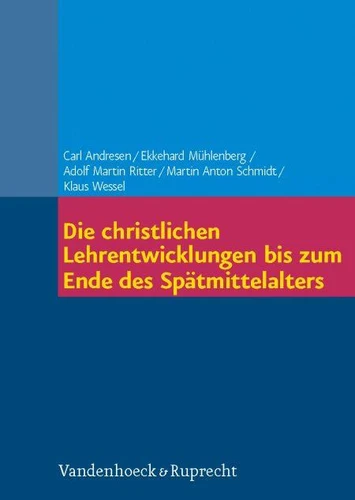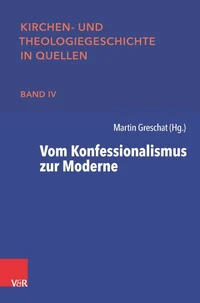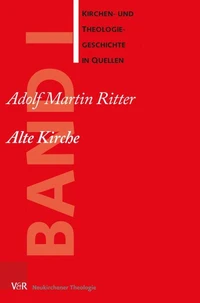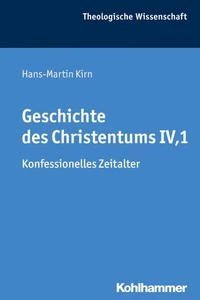Die christlichen Lehrentwicklungen bis zum Ende des Spätmittelalters
Par : , , , ,Formats :
Disponible dans votre compte client Decitre ou Furet du Nord dès validation de votre commande. Le format PDF est :
- Compatible avec une lecture sur My Vivlio (smartphone, tablette, ordinateur)
- Compatible avec une lecture sur liseuses Vivlio
- Pour les liseuses autres que Vivlio, vous devez utiliser le logiciel Adobe Digital Edition. Non compatible avec la lecture sur les liseuses Kindle, Remarkable et Sony
 , qui est-ce ?
, qui est-ce ?Notre partenaire de plateforme de lecture numérique où vous retrouverez l'ensemble de vos ebooks gratuitement
Pour en savoir plus sur nos ebooks, consultez notre aide en ligne ici
- Nombre de pages832
- FormatPDF
- ISBN978-3-647-55026-8
- EAN9783647550268
- Date de parution17/08/2011
- Protection num.pas de protection
- Taille4 Mo
- Infos supplémentairespdf
- ÉditeurVandenhoeck & Ruprecht
Résumé
This volume concerns the development and formation of the Christian teachings during ancient times, in the Old Church of the West and East as well during the Middle Ages. This represents a section of the history of Church dogmas and theology which was fundamental or at least vital to the overall history of the Church. This period in time was of particular importance to those Byzantine Orthodox Churches and the various Eastern Orthodox Churches that recognize only two or three of the seven ecumenical councils otherwise valid for the Byzantine Orthodox Church.
This is also the case, albeit in a different way, for the Roman-Catholic and the Anglican Churches. And it was fundamental to the Reformation, particular Lutheranism. Thus, the original title of this volume is rightly chosen since the authors do describe the "Development of Christian Teachings in the Framework of Catholicity."A special feature of this volume lies in its description of the interactions between the history of Church dogmas and Church theology.
It also follows the historical events and comments on particularly important juxtapositions that are of general interest, instead of approaching the material longitudinally by depicting the path in the light of our modern standpoint, resulting in extensive introductions to the individual elements of dogmatics. In this sense, this volume represents an invaluable and unrivalled handbook for Germany and elsewhere.
This is also the case, albeit in a different way, for the Roman-Catholic and the Anglican Churches. And it was fundamental to the Reformation, particular Lutheranism. Thus, the original title of this volume is rightly chosen since the authors do describe the "Development of Christian Teachings in the Framework of Catholicity."A special feature of this volume lies in its description of the interactions between the history of Church dogmas and Church theology.
It also follows the historical events and comments on particularly important juxtapositions that are of general interest, instead of approaching the material longitudinally by depicting the path in the light of our modern standpoint, resulting in extensive introductions to the individual elements of dogmatics. In this sense, this volume represents an invaluable and unrivalled handbook for Germany and elsewhere.
This volume concerns the development and formation of the Christian teachings during ancient times, in the Old Church of the West and East as well during the Middle Ages. This represents a section of the history of Church dogmas and theology which was fundamental or at least vital to the overall history of the Church. This period in time was of particular importance to those Byzantine Orthodox Churches and the various Eastern Orthodox Churches that recognize only two or three of the seven ecumenical councils otherwise valid for the Byzantine Orthodox Church.
This is also the case, albeit in a different way, for the Roman-Catholic and the Anglican Churches. And it was fundamental to the Reformation, particular Lutheranism. Thus, the original title of this volume is rightly chosen since the authors do describe the "Development of Christian Teachings in the Framework of Catholicity."A special feature of this volume lies in its description of the interactions between the history of Church dogmas and Church theology.
It also follows the historical events and comments on particularly important juxtapositions that are of general interest, instead of approaching the material longitudinally by depicting the path in the light of our modern standpoint, resulting in extensive introductions to the individual elements of dogmatics. In this sense, this volume represents an invaluable and unrivalled handbook for Germany and elsewhere.
This is also the case, albeit in a different way, for the Roman-Catholic and the Anglican Churches. And it was fundamental to the Reformation, particular Lutheranism. Thus, the original title of this volume is rightly chosen since the authors do describe the "Development of Christian Teachings in the Framework of Catholicity."A special feature of this volume lies in its description of the interactions between the history of Church dogmas and Church theology.
It also follows the historical events and comments on particularly important juxtapositions that are of general interest, instead of approaching the material longitudinally by depicting the path in the light of our modern standpoint, resulting in extensive introductions to the individual elements of dogmatics. In this sense, this volume represents an invaluable and unrivalled handbook for Germany and elsewhere.







